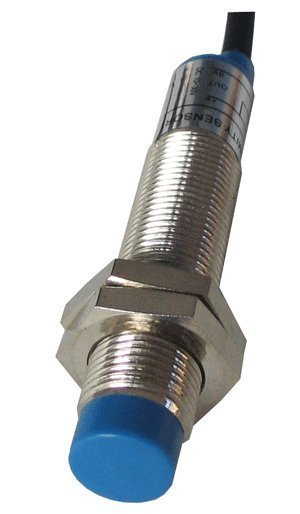A proximity sensor is an electronic device that is designed to detect the presence of objects, people, or other living things within a given distance and detection threshold. Proximity sensors are able to detect objects without physically touching them by transmitting a detecting field/beam such as infrared, acoustic, and inductive transmissions. When the sensor receives the transmission, it analyzes the return signal for interruptions that indicate that a new object has entered the search area and activates the sensor. The type of sensor deployed depends on the nature of the work to be completed. For example, a proximity sensor that is deployed as part of a home security system may use an IR sensor in order to detect a home intruder, but a capacitive sensor may be used in a shipping line.
How Do Capacitive Proximity Sensors Work?
When a capacitive proximity sensor is used, it detects a change between the dielectric constant between the two plates of the sensor. These sensors take a little more time to react, and are set to a switching frequency of 50 Hz as a result. Opaque containers or dust do not affect them and can replace optical sensors or devices. Capacitive sensors typically have a 10 mm sensing range that is 30 mm in diameter and use a potentiometer to fine tune the sensing range with an operating temperature of -14 to 158 degrees Fahrenheit.
How Does an Acoustic Proximity Sensor Work?
An acoustic proximity sensor uses sonar ranging to detect other objects. The time of an echo’s return indicates the range to a detected object. Due to an acoustic sensor’s complexity, they typically require a processor to interpret signals that it receives. An acoustic sensor’s most common use to date has been with Polaroid cameras, but they continue to be an active area of research.
How Does an Inductive Proximity Sensor Work?
An inductive proximity sensor uses induced magnetic fields and introduces metallic objects into them. They work well only if metal or metallic alloys make up the objects to be detected. Unfortunately, they do not detect people or other living things very well. They can fail if plastic composite objects are introduced into the system that the sensor is being used to support.
How Do Infrared Proximity Sensors Work?
An infrared proximity sensor sends out IR light and then calculates the distance to new objects, based on the characteristics of the returned signal. These sensors use several methods to calculate this: IR strength, a modulated IR signal, or triangulation of the returned signal. IR sensors rely on the objects being detected to have a reflectance value above the sensor’s minimum threshold of detection.
Using Proximity Sensors with Other Equipment
Most proximity sensors are used as part of a system of disparate parts designed to complete a common goal. For example, in a home security system, proximity sensors are commonly installed near external doors or large windows. This is done in order to provide a signal to the system’s CPU when an intruder comes through the door or broken window. In industry, proximity sensors can be used to detect the presence of materials on a construction or conveyor line and send an activated signal to a central processor that determines what action(s) to take with the automated line.




Follow Us!